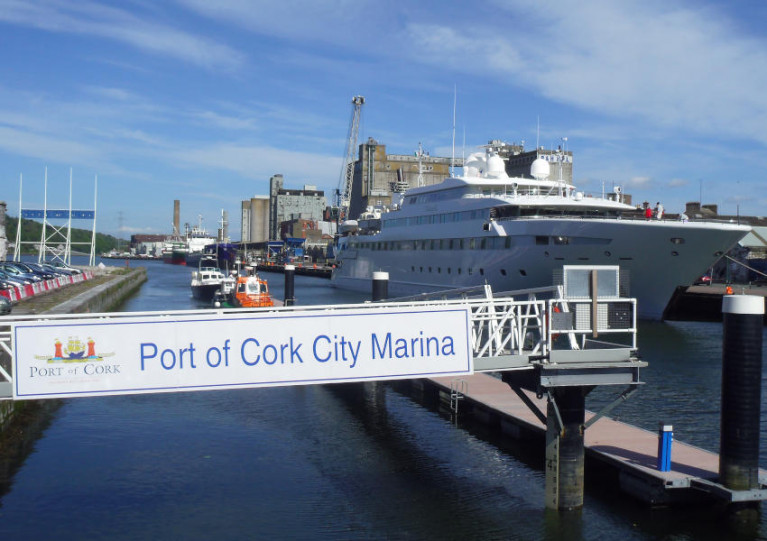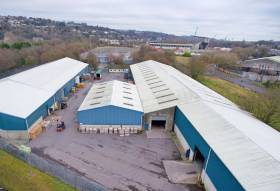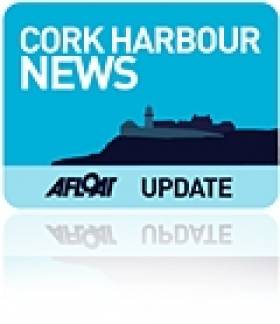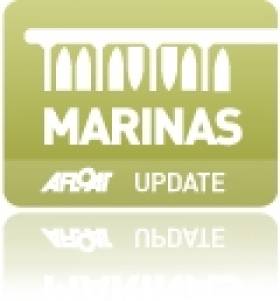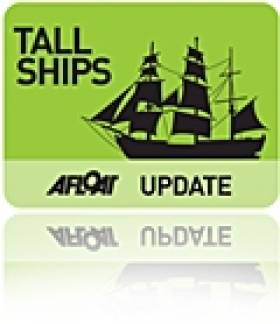Displaying items by tag: Cork City Marina
Change of Ownership at Cork City Marina with Port Company’s Move
Cork City Marina is now in new hands, following the Port of Cork Company’s move from its now former corporate headquarters in the Customs House to Ringaskiddy on Cork Harbour.
In a letter announcing the change, the Port of Cork’s Deputy Harbour Master Nicholas Bourke said: “It has been wonderful to have the marina under our stewardship, and being able to interact with all the numerous events, visitors and occasions over the last number of years.
“Indeed we have been visited by yachts from far and wide, learner rowers and even royal families.
“The new owners, Tower Holdings Group, are moving into their new premises with an exciting project ahead. In the meantime the marina remains open, albeit with a different owner at the helm.”
Bourke says the new owners will post their rates “in due course and formalise any arrangements for the City Marina as they settle in”. They can be contacted via Alison Lee at [email protected] or 021 245 5050.
Cork Docklands Site Comes To Market
#CorkHarbour - More than three acres of Cork docklands are coming to market, as the Irish Examiner reports.
The lands comprise a warehouse property between Monahan Road and Centre Park road east of the city centre, in an area already set for transformation between the revamped Páirc Uí Chaoimh and the new Marina Park regeneration project, adjacent to Cork City Marina by the former showgrounds.
Commercial and residential developers alike are expected to express interest in the 3.31-acre site, zoned for mixed use, and with a guide price of €1.2 million per acre.
Interest in this part of the city is growing with the imminent move of the Port of Cork downriver — and city planners are already meeting with potential buyers for the port’s historic buildings on Custom House Quay.
The Irish Examiner has more on the story HERE.
#LuxuryFeadship - A luxury motoryacht the Katrion (2003/401grt) is berthed at Cork City Marina, the 10-guest, 38.6m Feadship built vessel is advertised for sale for just shy of €13m, writes Jehan Ashmore.
The Cayman Islands flagged Feadship, a Dutch yard with more than 250 superyachts launched, has been in port for around a week though it is understood the motoryacht completed in 2003 is to head to Dingle.
Visitors such as the size of Katrion are accommodated on the outside berth of the Cork City Marina pontoon, where larger craft drawing up to 4m are moored alongside. The handsome and well proportioned-looking visitor (click for further details) has a draft of 2.5m.
Cork City Marina has 150m length of berthage which occupies an area between South Custom House Quay and Albert Quay. At the adjoining quay heading downriver are the more frequently used South Jetties from where commercial shipping docks close to the city-centre.
An example is Arklow Fortune (2007/2,998grt), which today is berthed at the privately owned quayside which mainly is used for grain imports to supply the nearby silos.
Other merchant vessels can also berth on the far side along the northern channel of the River Lee, though such activity is moreso for visiting vessels, among them Naval ships or those requiring lay-over periods.
One of the largest ships in recent years to berth along this stretch was at Horgan Quay, where Fastnet Line's Julia, the former Cork-Swansea car-ferry was moored in advance to starting the Welsh link. Currently she serves as a floating accommodation ship for a wind-farm installation off Cumbria.
Luxury 54m Motoryacht Visits Cork City Marina
#Motoryacht - Luxury motoryacht M.Y. Fortunate Sun which has luxurious accommodation for 10 guests and 12 crew docked at the Port of Cork's City Marina yesterday, writes Jehan Ashmore.
As previously reported, the 851 gross tonnes vessel on a call to Dublin Port in 2011 became the largest vessel to transit through the Samuel Beckett swing-bridge. On her visit to Cork, the vessel is moored along the pontoon off South Custom House Quay.
She is registered in the Caymen Islands and the charter vessel has a steel 54m long hull on a beam of 10.60m. The streamlined aluminium superstructure and also interiors are the work of Tim Heywood Design.
The decade old vessel completed by Oceanfast of Australia is powered by 2x 1737kW MTU 12V 4000M70 diesel engines. This delivers a flat-out speed of 17.3 knots and a range of 5,000 nautical miles.
A Weekend to Explore the 'Bounty'
The Cork-berthed replica HMS Bounty, the purpose built movie prop tallship used in the 1962 MGM studies film release of 'Mutiny and the Bounty' starring Marlon Brando, will be open to visitors from tomorrow, writes Jehan Ashmore.
The famous tall ship is to open to the public between (11am-6pm) and these times also apply to the Saturday and Sunday. Tours on board the Bounty are self-guided with crew assistance. Admission charges are €10 for adults and children €5, children under four years go free.
The Bounty is berthed at Albert Quay which faces opposite the Cork City Marina on the south quays of the city-centre.
The public can explore her "tween" deck 8' foot ceilings, this made it easier for the film crew and their equipment to access.
As a result, Bounty has been hired by filmcrews for the making of 'Treasure Island', 'Yellowbeard', 'Sponge Bob, Square Pants, the Movie' and 'Pirates of the Caribbean - Dead Man's Chest'. In addition to commercial movies, Bounty has also been the stage for many documentaries.
To compare the differences between the replica and the original 18th century built 'Bounty' click HERE.


























